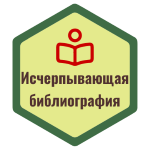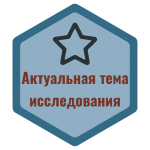The article considers the results of a study on the existence of abuse and well-being of children in Kazakhstan. Quantitative and qualitative data on the conducted research methods are given. Conclusions and recommendations for further research are made.
Keywords: child abuse, wellbeing, society, data, sources, respondents, lows.
В статье рассматриваются результаты исследования на тему существования жестокого обращения и благополучия детей в Казахстане. Приводятся количественные и качественные данные по проведенным методам исследования. Сделаны выводы и рекомендации для дальнейшего исследования.
Ключевые слова: жестокое обращение с детьми, благополучие, общество, данные, источники, респонденты, нормы.
Where is the line between abuse and parenting? Where does parenting end and violence begin? Talking about violence, people most often represent bruises and beatings. However, there are four main types of child abuse: physical, sexual, emotional, and neglect. The problem is that most parents do not see the distinction between parenting and abuse. A parent often justifies abuse as a future benefit for the child, assuming abuse as the way of parenting. However, it leads to hard consequences for child wellbeing.
Being a minor citizen of Kazakhstan, who has repeatedly witnessed violence against children in Kazakhstani society and having people, who were abused as a child in my environment, the issue of violence against children is significant for me. The desire to search this problem in detail and stop the spread of the problem is the main reason for choosing this topic.
Child maltreatment is a widespread problem in Kazakhstani society. The findings of the research conducted by UNICEF together with the local authorities in Kazakhstan showed that about 75 % of adults support corporal punishment to control the behavior of their children [1]. The general principles of the Convention on the Rights of the Child are reflected in laws of Kazakhstan [2]. Child well-being is prioritized in the Kazakhstan 2030: Concept for Social Development [3]. Despite the existence of various laws and social support programs in the country, the problem of child maltreatment still takes place in our society.
A lot of numerical data about child abuse in Kazakhstan are provided by different organizations such as UNICEF, World Health Organization. However, there is a lack of information about the opinion of society and qualitative data about the problem. Hence, the research about the widespread issue of child maltreatment among minor citizens of Kazakhstan. The study with the aim to assess the extent of the problem of violence against children among Kazakh minors was carried out. Identifying and classifying the types of abuse and studying the reasons and consequences of child abuse were the main objectives to achieve the aim. Document analysis, survey and interview were held in order to get information.
In this research, the method of document analysis was used in order to get numerical, secondary data about cases of child abuse in the world and Kazakhstan and to determine the rate of spread of given issues in society. The data from other sources were provided in the research to give the exact meaning of the topic and to explain the problem clearly from different perspectives and lenses. Before the research work, it was predicted that child maltreatment violates ethical norms, affects educational achievement, adolescent criminality, future wellbeing of children, and other social issues, and causes the violation of children’s rights and laws about protection of them.
Most of the numerical data were provided by corporate authors, such as UNICEF, World Health Organization, which included information both about Kazakhstan and the world. These organizations have a high status and trust of the audience. Information is collected by primary methods held by organizations themselves. Therefore, the information is reliable. Corporate authors are neutral and do not have any biases. They do not depend on the government or other factors. Hence, the source is objective and reliable.
Some information was gotten from individual authors’ works. They are authors with a high reputation and big experience, as they have written a lot of published articles. However, these individual authors used and cited secondary information from organizations and corporations in their articles. Local authors may have a vested interest in writing about the situation in Kazakhstan. Quotes from politicians and other famous people were cited in the articles. Hence, information may not be objective. Nevertheless, the authors have reliable knowledge about the problem as they have experience of working with children.
The method of document analysis did not give a precise view of the problem in Kazakh society, as most of the statistics were provided by international organizations. Therefore, the survey was organized. The conducted survey consisted of 7 questions and 30 respondents take part. The Survey Monkey platform was used in creating the survey. The audience was of three different age categories — less than 15, 15–25, and up to 25, in order to consider the problem from a generational perspective and collect primary data. The survey was planned to classify the types of abuse and to determine the causes of the violence against children in Kazakh society. All participants may be biased, as most of them have experienced the issue and all of them are citizens of Kazakhstan. Therefore, they assess the situation subjectively. Although the primary aim was to take surveys from people of different ages, 90 % of respondents were teenagers and only 10 % were adults. Hence, the results of the survey may be influenced by the opinion of the younger generation. There were some problems with the limitation of the platform where the survey was held. It affected the way of conclusion and generalization of data.
Since methods such as survey and document analysis could not provide primary data from experts, the psychologist of Nazarbayev Intellectual School in Taldykorgan, Ospanova Asem Ashimhanovna was interviewed. 5 questions were asked in this research method. The interview was conducted in order to study the possible consequences and reasons of child abuse.
Results of the survey showed that:
– 51.1 % of respondents witnessed emotional abuse in their childhood
– 24.4 % of respondents witnessed physical abuse
– 15.6 % of respondents declared that they have never experienced child abuse
– 8.9 % of respondents claimed that they have witnessed neglect in their childhood
– 43.3 % of respondents rated the frequency of child abuse as “sometimes” in childhood
– 30 % of respondents stated that they witnessed abuse rarely in their childhood years
– 40 % of respondents who have children use child abuse in behaving with their children and 60 % of them totally disagree with using violence in behaving
– 90 % of the audience strongly claim that it is not appropriate to use violence against children
– It is defined by the respondents that the most common cause of child maltreatment is psychological problems and mental illnesses of parents, which amounted to 47.9 %.
– 25 % of people rated that cultural features may also be the cause of child maltreatment.
– Childish disobedience was considered as one of the causes of child abuse by 20.8 % of respondents
– 6.7 % of respondents answered that ineffective laws might be the cause of violence against children [4]
The results of the survey gave an accurate classification of the types of abuse witnessed by the respondents. The 80 % of respondents were youngsters aged between 15–25 years, subsequently, the rating of kind of abuse mostly relates to this generation. As it was, there are 4 main types of abuse: physical abuse, emotional abuse, neglect, and sexual abuse. The respondents were asked to point out the type of violent expression they have experienced from their parents. The most popular type of abuse is emotional abuse with 51.1 %. In the second place, there is physical abuse, which was rated by 24.4 % of respondents. The following type of abuse is neglect. 8.9 % of people responded that they have witnessed neglect in their childhood. The most uncommon type of abuse is — sexual abuse, as no one has answered that they have experienced it [4].
Significant information about the consequences of child abuse was received from the interview with the expert and led to many conclusions. According to the interviewee, child abuse has a lot of significant consequences. Firstly, it causes physical harm to a child. By hitting, slapping or throwing harmful things at a child, parents’ actions can result in serious injuries, as a child can be very fragile and easily get injured. Consequently, a child will have health problems, traumas or even will die. Secondly, child maltreatment affects the mental health of a child. As Asem Ashimhanova said, “This can lead to low self-esteem, uncertainty, fear and anxiety, negative emotions, depression”. Hence, emotional violence against children has a substantial effect. Thirdly, from the interview, it was recognized that an abusive attitude of parents toward a child has an impact on a child's future life and social relationship of a child. A child who has tolerated abuse in the family tends to use abuse in relationships with other people in school, at work, in friendships, or in the future family. Therefore, an abusive childhood can leave a mark on a whole life.
Results of the survey showed that the psychological state of parents is the most common cause of child abuse, as it was chosen as the cause by 47.9 % of respondents. “Of course, the use of violence against children is related to the psychological state of parents” — justified Asem Ashimhanovna in the interview. In some respondents’ opinions, child disobedience and cultural characteristics may be one of the causes of the violence against children. 20.8 % of people voted for the former and 25 % for the latter [4]. In the interview, it was told that lack of parenting skills is also one of the causes of child abuse. All in all, interview and survey results gave us different reasons of child abuse.
Child abuse violates the ethical norms of society, as 90 % of the respondents strongly claimed that child abuse is inappropriate in raising a child [4]. It not only affects educational achievement, adolescent criminality, and the future well-being of children, but also the physical and mental health of a child. It was approved that child maltreatment causes the violation of children’s rights and laws about protection of them.
In general, the research not only approved the predicting thesis but also provided additional information, which gave a more detailed view of the issue and direction for further research work. In this research, the problem was discussed from ethical, social and political lenses. However, it was found that cultural and economic factors also influence the issue. Therefore, in the future, the issue of the research may be considered through cultural and economic lenses.
During the research, it was noticed that cultural features have an influence on the problem of child abuse. According to the results of the survey, 25 % of respondents rated that cultural features may also be the cause of child maltreatment [4]. In addition, during the secondary research works it was noted that culture shapes the way individuals experience childhood and how they raise their children. For instance, in Central Asia, the majority of male circumcisions are performed for religious or traditional reasons, whereas in some countries such as Iceland, the circumcisions are banned for non-medical reasons [5]. Nonetheless, the influence of the culture on the spread of child abuse has not been fully searched. It may be searched by studying the ways of upbringing in different cultures and by conducting a survey about keeping traditional ways of behaving for children in families.
The economic lens has not been considered in this research work. Nevertheless, an economic factor has a substantial influence on child abuse, as it can be the main cause of the neglect. Hence, in further research, the impact of the economy and financial state of the parents will be explored. It can be searched by holding a survey among parents about their financial state, or by secondary research about the average finances.
The results of the research came out monotonous and there are no differences in the answers of the respondents. It is because of the similarities of the audience. In order to improve the results of the research, the survey can be conducted among a wide audience of different ages, citizenship, nations, and social status. It will help to look at the issue from different perspectives and compare the relevance of the problem in other countries and in Kazakhstan.
Notwithstanding some limitations and weaknesses of the study, the results were beneficial in understanding the issue from the perspective of society and gave qualitative data. All in all, the research had reached the main objectives and aim.
Although there are a lot of conducted research works all over the world, the problem of child abuse still has not found its solution. Because all these researches play the announcing, informing and investigating role in that issue. However, different spheres should be considered and various actions should be taken in order to solve the problem of child maltreatment. For instance, confirming a set of several laws still cannot fully solve the issue of neglect. Economic and cultural contexts should be considered as well, as they directly influence the welfare of humanity, including children. Therefore, researches are not enough to address the problem. Child abuse is a widespread problem not only in Kazakhstan, but all over the world. Hence, large-scale solutions should be taken by both authorities and society. Only by taking actions from different perspectives the problem of child abuse can be solved.
References:
- Ending violence against children. (n.d.). UNICEF. Retrieved from https://www.unicef.org/kazakhstan/en/ending-violence-against-children
- A situation analysis of children in Kazakhstan. (2019). UNICEF. Retrieved from https://www.unicef.org/kazakhstan/media/4611/file/Situation %20Analysis-2019.pdf
- On the Rights of a Child in the Republic of Kazakhstan. (2002, August 8). ILS «Adilet». Retrieved from https://adilet.zan.kz/eng/docs/Z020000345_
- How child abuse in families influences children welfare in Kazakhstan? (2022, April 4). SurveyMonkey. Retrieved from https://ru.surveymonkey.com/results/SM-5wRf3vUU6d7uY2xSgbZcKw_3D_3D/
- Elizabeth, A. P., & Justin, M. A. Male Circumcision. (2019). National Library of Medicine. Retrieved from https://www.ncbi.nlm.nih.gov/pmc/articles/PMC6390792/











